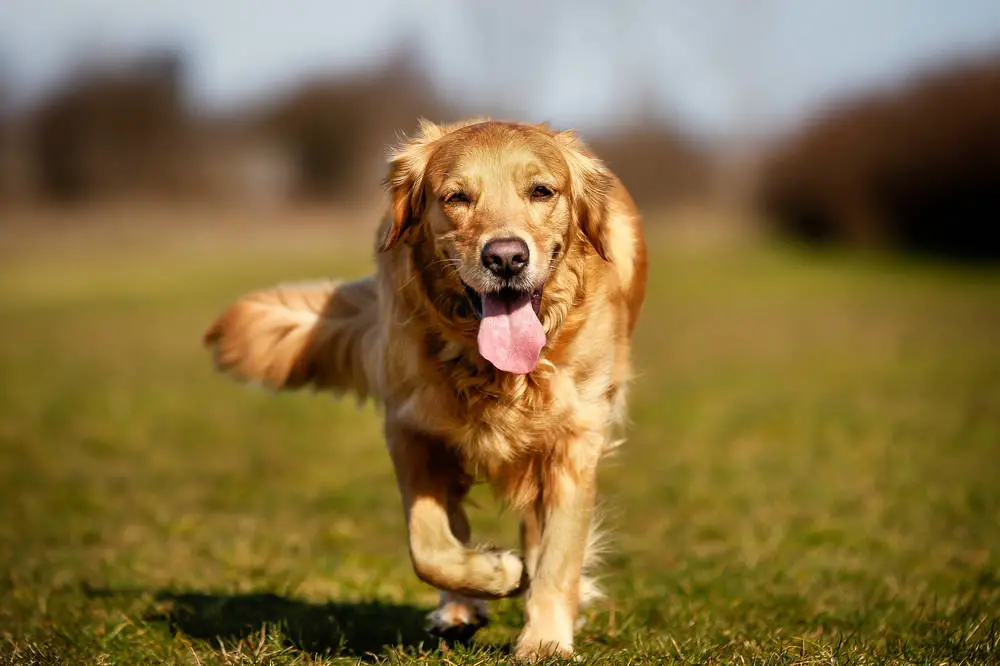
Dogs can exhibit a lot of strange behaviors that leave pet owners baffled. At times, it may be the quirks of an individual dog, at other times it may be a one-time thing as a response to a specific situation.
Often they make for great content that you may have seen going viral on the internet. For example, a video of a dog comically walking backward will certainly garner hits. But is it natural for your dog to walk backward?
Why Your Dog May Be Walking Backwards
Walking backward is not typically something that is considered normal dog behavior. Like all four-legged animals, dogs are always supported by three legs in a triangular fashion when they are walking.
The left hind leg moves first, followed by the left foreleg, then the right hind leg and then completing the movement with the right foreleg. This is the normal way for all four-legged animals to proceed, though the pace might be different.
So if your dog has suddenly taken to a different way of walking than what has been the evolutionary norm, you can expect something to be not right. If your dog is walking backward, that is usually out of the ordinary. The following are reasons your dog may be proceeding with its backside in the front.
Training
If your dog has been trained to walk backward, then that is a behavior you can consider normal and it does not need to ring alarm bells. Usually, though, a trained dog may walk backward if it has been asked to. It is unlikely they will do this out of leisure.
Walking backward is not the most natural instinct for a dog, unless there is a situation that warrants it. The dog does not know which way it is going, and let’s face it, this is a counterproductive way for anyone or anything to move.
If you have been training your puppy to walk backward, they may do it just for the kick of it, perhaps to amuse themselves. Depending on the breed, they may even be doing it to show off, in the hope for a treat!
If this is a behavior you have introduced into your dog’s movement, there is no need to be worried. They are simply complying with what you taught them and at times the behavior may come up even without your command words.
Related: Why Do Dogs Lay On Your Feet?
Fear
Another common reason for dogs to walk backward may be fear of anxiety. Perhaps they have seen something that makes them nervous or scared and this is a way for them to retreat. Your dog may cower, shiver and even whimper if this is the reason for their suddenly changing the course of their direction.
Walking backward is often linked to a fear response or anxiety. They may even bark or let out cries to alert you of the source of their anxiety. It could be a serious threat that you need to look into (like a coyote or wild animal in the backyard) or it could be an everyday thing that your dog just needs to get used to, like a new housekeeper.
Neurological Reasons
This is perhaps the most troubling reason for a dog to be walking backward. If it is a fear response, you know that your dog’s reflexes are strong. You can make sure that your dog is comforted and the source of its fear is addressed.
However, a neurological trigger could lead to other disoriented behavior. This could mean that the right signals are not reaching the brain, and your dog may have, quite literally, forgotten how to put the right foot forward. This needs to be looked into as soon as possible.
Pain
Your dog may have injured their hindquarters and the backward walking movement may help to alleviate the pain by removing pressure from the point where it hurts. This is often the case with senior dogs as arthritis and joint pains become common.
You may want to notice how your dog is sitting or whether it is wincing during the movement. That should indicate if there is an injury that needs to be looked into. Walking backward may be a way for them to move but with less pain.
Signs to Lookout For
The moment you start noticing that your dog is walking strangely, it is important to pay attention. More than a one-time display of quirky behavior, this could be symptomatic of a different problem.
Make note of your dog’s body language. If they are in pain, there will be other indications. As mentioned above, notice if they are wincing in pain when they move.
Notice if they are shivering, cowering or whimpering. If this is a fear response, they will likely have their tail between their legs and if they can see, they will look to you for help. Unfortunately, this can also be their body language if it is a neurological impulse.
But other things you can lookout for if you think this is a neurological problem is to see if they are disoriented in other ways. Do they look confused? Have there been other changes in their behavior?
You may want to notice if they lose coordination in other ways or if they are dragging their paws. Your dog may even engage in some repetitive behaviors, perhaps because they find it relaxing.
What to Do If Your Dog Is Walking Backwards?
Once you have noticed that your dog is walking backward, make note of their body language so you can figure out the reason for this behavior. You can then take action accordingly. If you need to call the vet, you will have notes on your dog’s behavior when they were walking backward.
If this is a fear response and is a persisting problem, you could seek the help of a trainer so your dog can pick up a few coping mechanisms. If this is a result of a trigger for a past trauma, this may be a tricky situation and requires patience to deal with.
Caring for a fearful and anxious pet can be extremely challenging. The behavior may alarm you at first, but once you have figured out their triggers, you could perhaps devise a plan, along with the vet, to make your dog more comfortable.
If this is a symptom of pain, you should see a veterinarian to treat the injury. Your dog may not be able to speak to you, but they will find ways to communicate with you—keep your eyes and ears open.
But if your dog’s backward walking cannot be explained away as any of the reasons mentioned above, it is likely it is a behavior unique to your dog. Encourage your dog to walk normally and give them positive reinforcement.
But if it is not a behavior your dog resorts to out of distress, you can simply let it be and accept it as an adorable quirk! Perhaps your dog can be in one of those viral videos on the internet!
How to Train Your Dog to Walk Backward
If you are actively looking to train your dog to walk backward to make them sharper, there are ways to do that as well. This can also be a way for your dog to exercise a different set of muscles while walking (the same applies to you as well).
Your dog will need positive reinforcements and the right kind of command. You may also want to deploy this training session in a narrow hallway or corridor where they cannot run sideways.
When you walk towards your dog, they will instinctively walk backward. When they do that, you can let them know that behavior is desired by giving them a treat.
Now, repeat this exercise with the command words of your choice like ‘Retreat’ and ‘Stay’. This is not an exercise for a single day and may take a fair amount of patience.
Depending on the breed you are dealing with, the tactics you adopt to train them may have to be adjusted. Some dogs are more stubborn while others may be sensitive and do not respond well to a harsh tone.
You need to make your dog feel like this exercise is important, otherwise, they will feel confused about why this is happening in the first place. Imagine you are trying to teach a child something—you may want to break the action down for the child instead of imposing something that does not make sense for them.
Though you cannot rationalize with a dog the same way you can rationalize with a child, you need to adopt similar teaching techniques so your dog can understand you better. Take it step by step and give your dog time to understand what you need from them.
Conclusion
In conclusion, walking backward is generally not normal behavior for dogs. Some of the reasons your dog may be walking backward are more worrying than others. But the important thing is to be observant and notice changes in your dog’s behavior so you can intervene in time if required.

